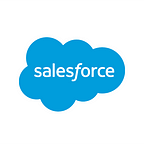Net Dollar Churn is How You Grow Your Business; Gross Customer Churn is How You Lose Your Business
By Alex Niehenke
SaaS businesses are unique in that you spend upfront to acquire a customer who will become profitable over time. Therefore retention (or its inverse, churn) of customers is an important metric to track. While there are several ways to calculate churn, the two churn metrics to focus on are net dollar churn (how you grow your business) and gross customer churn (how you lose your business).
Net Dollar Churn is How You Grow Your Business
Net Dollar Churn = [$ Revenue Lost from Cancelled Customers] + [$ Revenue Lost from Customers Spending Less] — [$ Revenue Gained from Customers Spending More]
You should calculate net dollar churn on a monthly, quarterly, or yearly basis and make sure to only include recurring revenue (exclude professional services, one time fees, etc). A negative result, or negative net churn, is a powerful way to grow a SaaS business. Expansion from existing customers exceeds revenue lost from churned customers so the business will grow without adding any new customers. For example, a negative net churn of two-percent per month would mean that a business doubles in 35 months (assuming no new customers). Think about the customer acquisition cost saved. Achieving strong and consistent negative net churn is both the opportunity and challenge.
Gross Customer Churn is How You Lose Your Business
Gross Customer Churn = Number of Customers Lost
In the above example we highlighted that a negative net dollar churn of two-percent doubles a business in 35 months. The inverse, a positive net dollar churn of two-percent, halves the business in that same period. Having “leaky” revenue is a problem, but can be masked by adding enough new business to cover for the losses. This is a frequent mistake that ends in catastrophe. Losing too many customers over time will destroy a business. Therefore it is important to track gross customer churn (how many customers were lost in the past month, quarter, or year?).
A business with ten-thousand customers and two-percent monthly gross customer churn will lose 2,153 customers in a year. That is almost 25% of its customers, or all of them in four years. Some of those lost customers will go to a competitor. Others will provide negative referrals. Each customer lost has an ability to impact many other customers. Say, for example, the market size is 100,000 potential accounts and you lose 10,000 in four years? Now what if each one of those lost accounts tells one friend. You won’t be successful if twenty percent of potential accounts become unavailable over time.
Simple Tips for Managing Churn
Tracking these two types of churn is a great first step. The next step is managing the business to improve both. There is no shortage of literature for those that want to dig into the topic. A few simple tips may make a great place to start:
- Onboarding: The customer has signed the contract but what now? Who manages account onboarding in the organization? What are the steps in onboarding? What are the metrics to measure a successfully onboarded customer? Thinking through the go live process for a customer is the first and easiest way to lower churn. Many customers are lost at the first impression. A clear script and project management software like Wrike should be implemented. Tools like WalkMe can help with getting organizations comfortable with using a product.
- Engagement: Just like consumer businesses, SaaS businesses need to measure engagement. How many end users per customer are logging in daily, weekly, monthly? What percentage of the total organization does that represent? Does it skew towards junior or senior executives? These metrics signal for the health of an account, especially when trended over time. Tools such as Gainsight or Totango have created dashboards for aggregating this data. Analytics and communications packages such as Mixpanel or Intercom can also achieve a similar result in the early days.
- Renewals: All too frequently the only touch-point with a customer is shortly before the renewal. This is like asking a restaurant patron if they would like another drink as you’re handing them a bill. Instead, make a point to check with a set frequency. Each of these interactions is an upsell opportunity as well as churn prevention. What does the customer like about the product? What else would they like to see? At the end of your renewal cycle it should be apparent that the customer will or will not renewed.
Alex Niehenke (@aniehenke) is Principal at Scale Venture Partners.
Get your name out into the world. Learn how your sales team can help build your brand by downloading the free e-book today.
